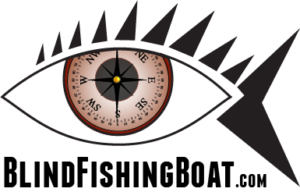Mississippi Lake Porta-Bote Shake-down trials
The Boat was taken to Mississippi Lake for three days of trials over the May long weekend. A shore-side camp site was reserved at McCreary’s Beach side Resort which allowed me to assemble and launch the Boat directly from the camp site each day.
This set of trials was intended to allow me to become comfortable operating the Porta-Bote and Minn Kota 40lb thrust transom mount electric trolling motor. The trials consisted of my driving the boat and my wife, Anne Melrose, giving directions. A big thanks to Anne who not only agreed to go out in the Boat with me, but to do it with our 14-month old daughter.
One of the things I wanted to determine was if my remaining light perception in the peripheral vision of my left eye would be sufficient to observe the boat turning. While it does give me some feedback when making sharp turns, it was less than helpful with minor course corrections, or more importantly, keeping the Boat traveling in a straight line. This later issue turned out to be one which I would wrestle with for the rest of the season.
I also wanted to determine if I could judge the boats course (e.g. straight, turning left or right) by the feel of the Boat on the water. The first day out was both calm and windless which were ideal for testing for inertia. Turns out I can only feel if the boat is turning if I’m coming hard about. The trolling motor is fast (6kph) but insufficient to generate feelings of inirtia through minor course adjustments.
On subsequent days I was able to test for other sensations generated by waves and transmitted through the Boat’s seat and floor to the pilot. I determined that taking waves head on feels different than taking waves on the beam or running with the waves. With smaller waves, the differences are communicated more through the sound of the waves slapping the hull than the actual rocking motion of the boat. Regardless, these differences are insufficient to be counted on for maintaining course headings within 15 degrees. Wind can also assist in ones maintaining an over-all orientation, but given the frequency wind changes direction especially on smaller bodies of water it too is insufficient to provide the feedback needed to maintain a true course. Wind and waves together could serve to aid in navigation in an emergency, but otherwise they are secondary to other more primary sources of navigational aids.
Given that peripheral sight, body sensation and wind were not going to help me with maintaining course headings, I was down to tiller position on the trolling motor’s head as my last resort prior to my relying exclusively on navigational aids. after establishing the correct height of the motor using the adjustable stopper on the motor’s shaft, I still found the height of the tiller to be somewhat high. (I wanted the motor in the water the minimum amount – just deep enough so the propeller wouldn’t hit the bottom of the Boat on hard turns, but shallow enough to avoid underwater obstacles.)
The tapered shape of the tiller handle on the Minn Kota and the manner in which it sweeps back to merge with the front of the motor gives ambiguous sensory feedback to the hand to know exactly which way the motor is pointing. Good enough to keep a general course, but the angle-style grip does not support using the tiller as a “pointer” to set a course based on tactile feedback. This ambiguous feedback could have been compensated for with slight stops or bumps when turning the motor past the 90 and 45 degree points.
At the time of these first trials, I was ready to accept the fact that depending on electronics only for course heading confirmation and not having any tactile or sensory feedback would be acceptable. However, I have since come to the conclusion that sensory feedback via the motor is crucial, and have now commenced exploring various ways to incorporate such feedback into the bracket that supports the motor’s shaft. My plan is to implement a solution this winter.
